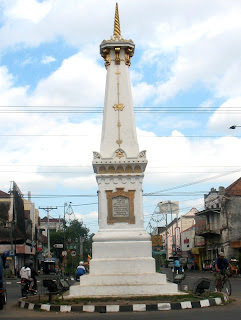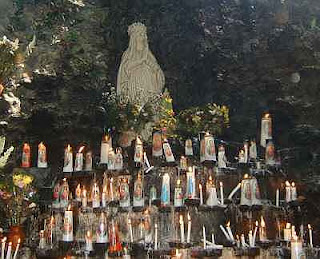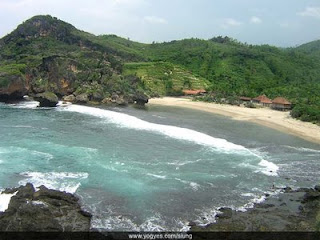Visiting Sonobudoyo Museum is an alternative to see keris and other related items to it from all parts of Indonesia. The museum that keeps around 1,200 keris (most of them were donated by Java Institute) will satisfy your curiosity about keris since the Kingdom of Yogkarta that keeps sacred keris does not allow public to see its keris collection.
Sonobudoyo Museum is within easy reach from Yogyakarta Kingdom; it is located across the North Square of Yogyakarta. To get into it, you only have to pay the entrance ticket as much as IDR 3,000. Meanwhile, in order to see various kinds of keris, you have to go through quite long procedures because you have to get permission from the museum chief officer. This is because many of the keris collection are still kept in the collection room; they are not shown to public.
The first thing you will see that is related to keris is wesi budha (Buddha Iron); it is the main material to make keris that was used in around the year 700s AD, or during the triumphant of Hindu Mataram Kingdom. Wesi Budha can be seen in the middle room that also keeps some collections of the triumphant of Buddhism civilization in Indonesia. In addition to the wesi budha, there are various household furnishings, weapons and handicrafts of the same period.
Entering further, you can see some keris, even though the number is relatively small. Some of the exposed keris are straight keris, keris with 7 curves, 11 curves and 13 curves. Most of the keris displayed in this room are those from Jave. In addition to the keris, batik cloths with different patterns are kept there.
Another room behind the library of the museum, displays more types of keris. The museum attendant explained to YogYES that the room keeps various kinds of keris from all parts of Indonesia and it keeps collection of accessories such as pendok of Yogyakarta and Solo and the keris blade . More collection originates from outside of Yogyakarta since there was prohibition to collect keris with the quantity exceeding those of the collection of Yogyakarta Kingdom.
The Javanese keris kept in the museum are those with 7, 11, 13 curves or called luk and straight keris with various pamor (pattern), such as beras wutah / the spoiled rice (pamor that was accidentally resulted from the forging process, in the form of connectiong circles), sekar pakis (in the form of the fins flower) and so on. The keris from outside of Java that are kept there are, among others: the unique rencong Aceh, mandau from Kalimantan, keris from Madura and Bali, and keris from Sulawesi or Celebes.
In that collection room, you can also see many old keris handles with interesting designs. There are keris handles in the forms of human head, human full posture, dragon, lion, and so on. There are hundreds of pendok that are classified into two categories, namely Yogyakarta and Solo styles. Different from the keris handles with various designs, the shapes of pendok are relatively the same.
sumber: http://www.yogyes.com/
sumber: http://www.yogyes.com/







